The moment we walked through the school gate will stay in my memory forever. Exhausted, but happy to have reached our destination, we stood in front of a line of 100 children who looked at us joyfully and each of them eager to hang the white scarf of welcome (the khatta) around us. Tears welled up in my eyes, and I noticed this reaction not for the last time on this very memorable journey.
It had started 6 days earlier with our landing in Kathmandu and the first meeting with the other 5 team members in our trekking hotel in the colourful, hectic shopping district of Thamel. After a lovely Nepalese dinner with our guide Sangay, we set off the next day on our excursion to the World Heritage site of the ancient city of Bhaktapur. We were amazed and impressed by the energy that had gone into rebuilding the many temples and houses, most of which had been destroyed or badly damaged in the 2015 earthquake.
The excursion turned out to be very worth the time and effort, as did our evening visit to the largest Buddhist temple in Nepal.
Early the next morning, we started out on the actual journey to the “Valley of Happiness”. A 12-hour journey by bus and, in the end, by jeep over hills and dales took us to the starting point for the trek to Macha Khola. There we started our 3-day trek across 17 suspension bridges, steep climbs and past mule caravans to Bihi at an altitude of 2100 metres. We were happy and proud that, thanks to strong team spirit, each of us had managed to complete the hike and enjoy the magnificent views.
In Bihi, we had a little time in the morning to visit the site for the recently planned primary school with kindergarten and to become somewhat familiar with the challenges it poses.
The old school still standing at the site, but now more or less a ruin, will be demolished so that as much material as possible can be reused and in order to the save cost and time for expensive transport of new material. The discussions about the dimensions and the time frame it all entailed were conducted by “Dr. Thomas” (as Thomas was called by everyone) with great success.
On the fourth day, we then set off for the final very steep ascent to Serang Monastery and the Serang school somewhat below it.
Once again, we crossed deep valleys via suspension bridges, narrow paths and along overhangs before finally seeing, with great joy and relief, the gate of the Serang school in front of us. The big red “Welcome” sign beamed out its warm message.
The children were just as excited about the “big” visit as we were, and were especially curious to see our youngest trekking comrade, Sonja, who with her 13 years, red hair and a height of almost 1.80 m appeared in stark contrast to the rather smaller Tibetan children. Heike and I finally reached our sponsored child Dolma Youden at the very end of the line of children – and the tears of joy flowed again.
But first we went to the official reception with butter tea they had prepared for us, where teachers and visitors introduced themselves. It quickly became clear that the school is now in a very precarious situation due to the high number of pupils (103). In particular, the number of beds in the cramped dormitories is far from adequate and at the moment one bed generally sleeps 2 children.
Impressed, but not without serious reflections, we say goodbye to the children and promised that we will return the next morning to spend as much time as possible with them. “See you tomorrow” we call and the children answer with beaming faces and their cries “We love you. See you tomorrow”.

The last 400 m ascent to the impressive Serang Monastery against the backdrop of the sacred mountains were another highlight. Here, too, we are warmly welcomed by Karma Rinpoche (the “abbot” of the monastery) and the other monks and were shown our rooms in the monastery’s guesthouse.
For the next day, however, a major event was planned. In the morning at 7 a.m., life in the monastery already begins with the morning puja (comparable to a morning service in a church). Instead of an organ, however, the ceremony is accompanied by drums and, most strikingly, horns, which are in some cases as large as alpine horns. Perhaps not very melodic for European ears, but impressive nonetheless.
Heike lit a candle to mark my birthday, which this day I had started with a thick pullover and woolhat. But around 10 a.m., the strong sun was high enough to warm the monastery courtyard and, drawing comfort and renewed strength from the 20 degrees of sunshine, we walked down to the school again where we first discussed with the teachers and monks the future of the school in Serang, as well as the plan for the new school in Bihi. After long discussions in English and Nepali, with translations being provided by our lovely guide Sangay, it was agreed that kindergarten and grades 1-2 will be taught in Bihi, while Serang will offer schooling for children from grade 3 to grade 8, after which, hopefully, grade 9/10 will also be approved by the Nepalese district government.

We were then free to go out into the school yard where we were able to distribute among the eager children the many gifts, especially sports equipment, which our porters have carried up the mountain. The 4 teams (one from each of the 4 dormitories) were particularly taken by the new football boots. The frisbees are also quickly distributed, and the children laugh as they practise with us catching and targeted throwing, before all preparations are ready for the football tournament, featuring the 4 teams yellow, blue, red and green.
The boys show amazing tricks and skills with their new football boots, especially when you consider that most of them have until now been obliged to play with bathing shoes.
Time flies and after a wonderful morning with the children, we witness the amazingly disciplined food distribution ceremony for the 103 children, who line up singing and first have to show that their tin plate and hands are washed before receiving their portion of food. Singing together, even the smallest children who have already filled their plates wait until everyone has received their meal. The portions generally consist of rice, with potato and dal (lentils) – sometimes also spinach or noodles. The quantities are impressive: an average of 60 kg of rice per day has to be prepared – after being transported by mules up to this 3200-metre altitude. Only a very small part of the costs are borne by the state, and the school is accordingly dependent on donations from HCE. In the afternoon, the children are at their classes and we have a welcome opportunity to sunbathe in the monastery courtyard or do some overdue washing!
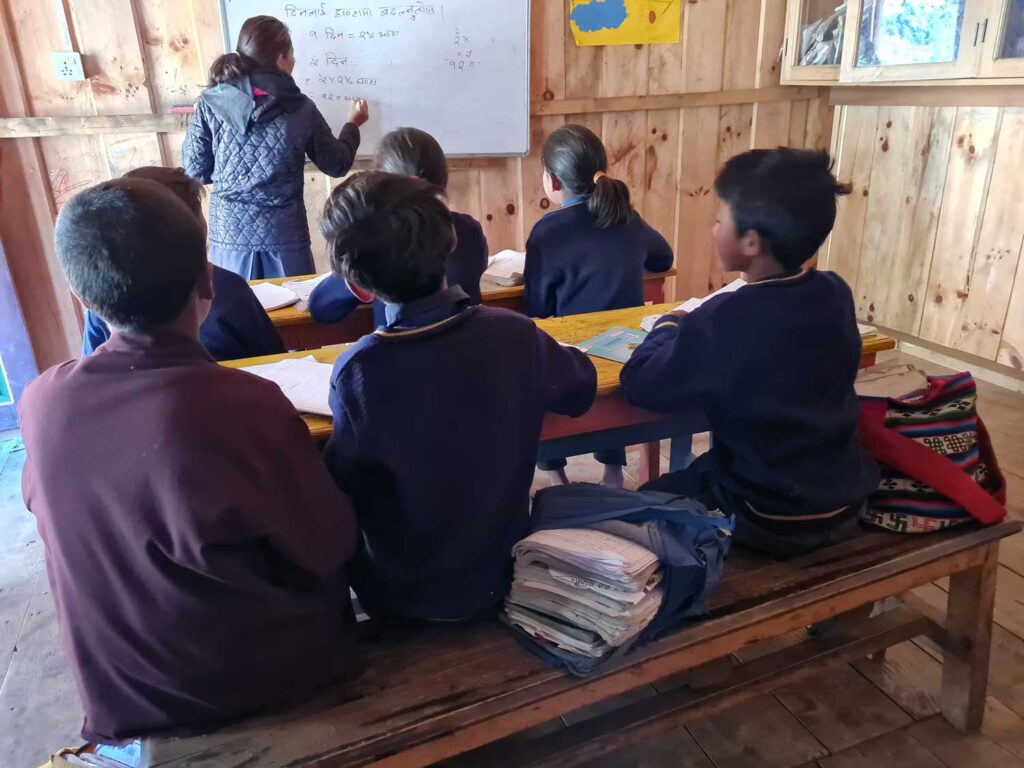
The following day we were able to get a idea of the school lessons being provided. The children are very attentive and eager to learn, as Cameron, an American volunteer who is helping with the science lessons for 4 weeks, confirmed: “In the US, I spend 50% of my time trying to get the pupils’ attention, while here kids are so much focused, but of course I need to explain more the English words”.
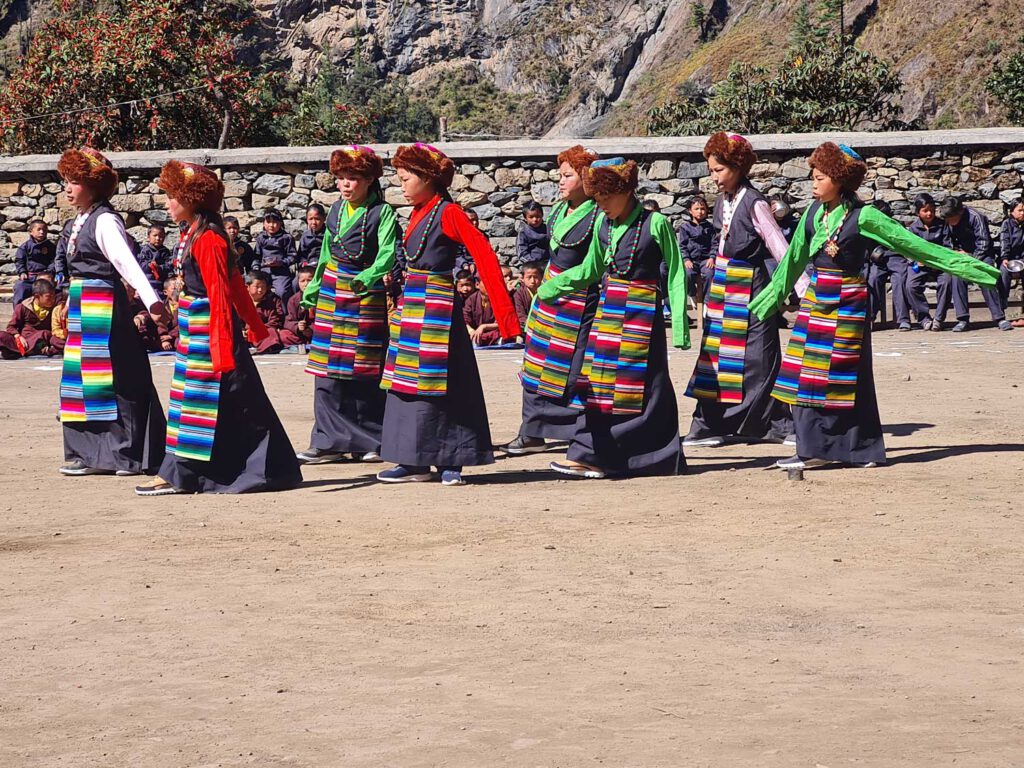
The bit highlight followed the next day, as the school and the monastery had prepared a big party. We sat down at long tables with the Rinpoche as guests of honour, from where we could admire the dance performances of the children and express our appreciation with loud applause.
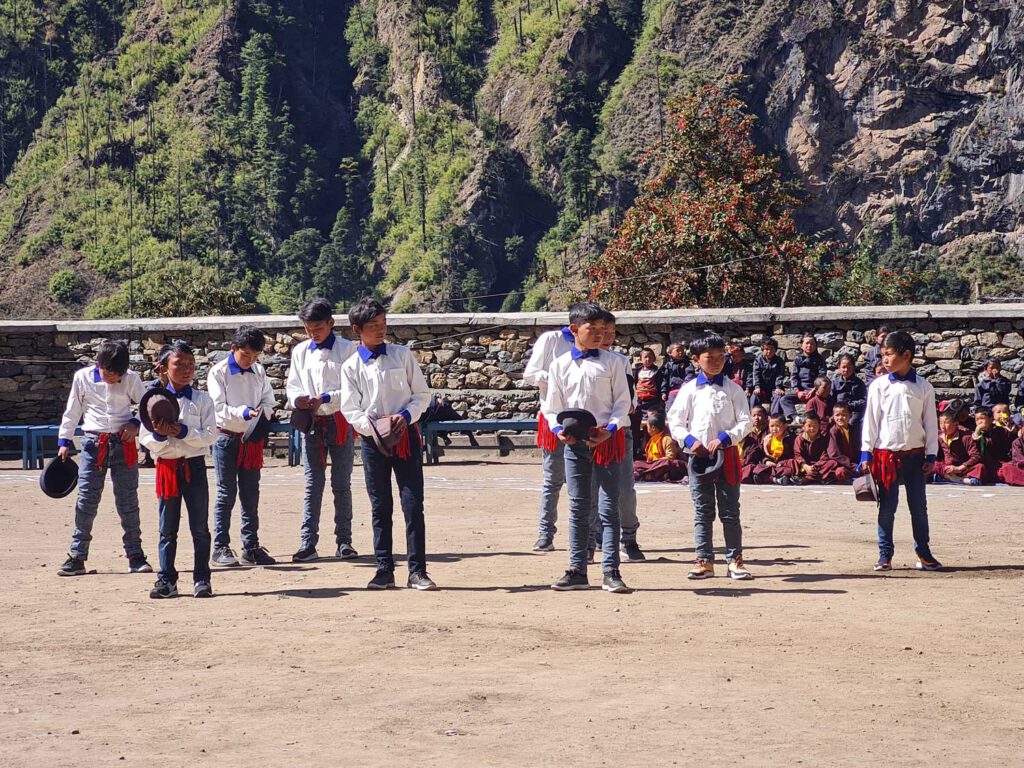
The children performed some amazing Tibetan and Nepalese dances in various groups, but were especially proud to also perform several dances with English language music and the matching attire.

After a big lunch together, there was a festival of mixed sports in the afternoon, with relay races and especially a football tournament for the 4 girls’ teams, each supported by a member of the visiting group. With a little luck, the winner was the blue team with our foster child and Heike as guest players.
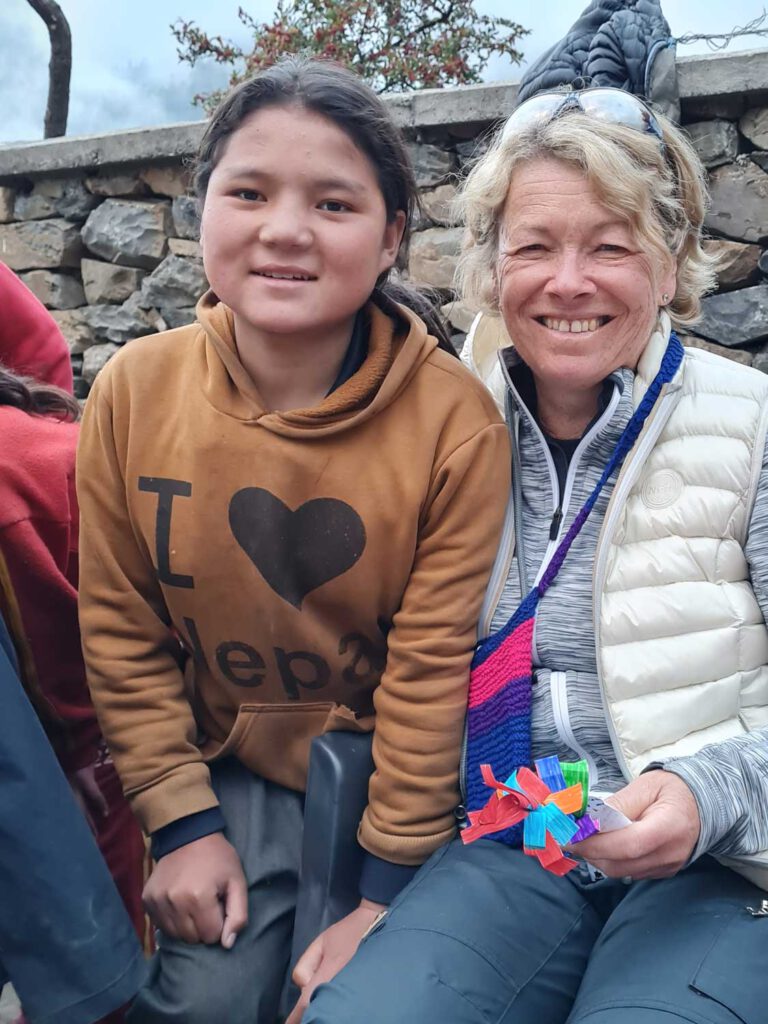
Then, all too soon, the day came when we had to say goodbye. We stayed until dinner and many children wanted to take us by the hand again.
Heike received a pretty bag for her mobile phone from a girl, which she had knitted herself, and a paper flower with the heartfelt message “Every day I remember you”.
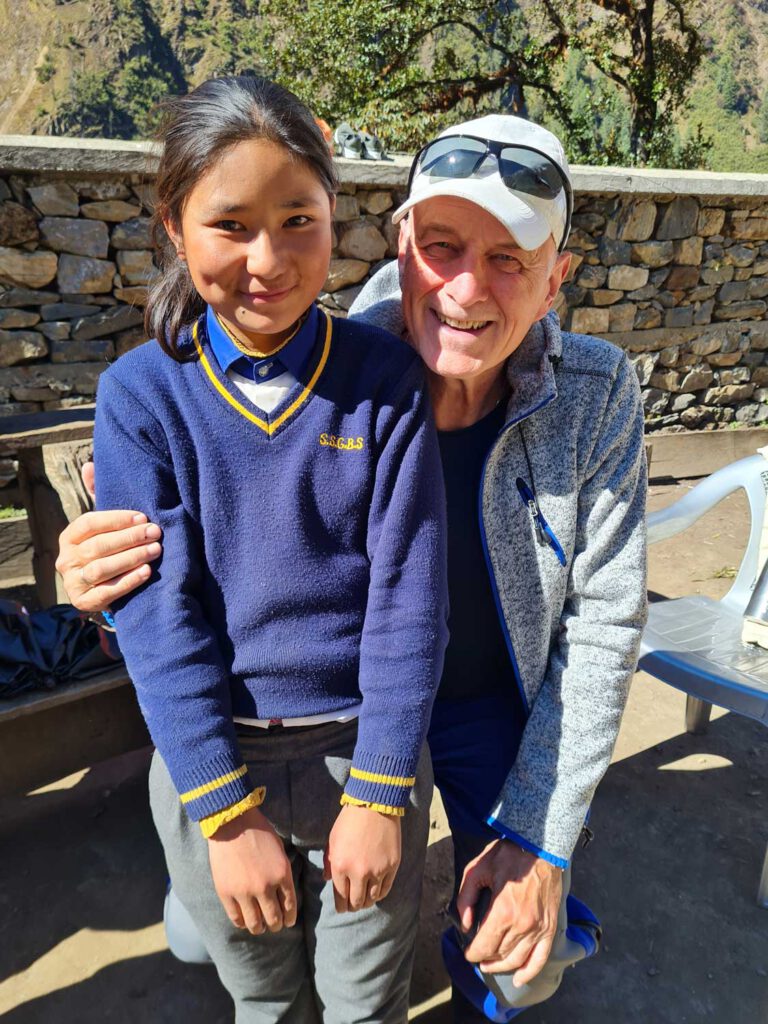
We gave our foster child Youden a farewell letter on our final day and promised her that we will always support her and come to visit her again. Shortly before the tearful farewells, she gave Heike and me a kiss on the cheek, which I found particularly moving and that I shall keep it in my memory forever.

Many thoughts stay in our minds on our return flight. While the view out of the window of the Himalayan massif wistfully receeds into the distance, we resolve to make every effort to ensure that these children get a good education in their school in the “Valley of Happiness”, giving them a good chance to be masters of their own lives. Back in Germany, we are heartened to read that the German national team is to donate EUR 1 million for childrens’ schooling. This donation will unfortunately go only to SOS Children’s Villages, which is why we are still urgently dependent on donations and sponsors.
We are therefore happy about everyone who wants to become a sponsor of one of the orphans or half-orphans at the school. You are more than welcome to call us (0176-30003187) should you have any questions about the school or the trip. We have also filmed some interviews with our mobile phones and will be pleased to show them if you are interested. You can also find more information on the homepage of Human-care-education: https://human-care-education.com/patenschaften/
